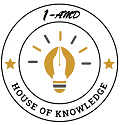Architectural Design of Online New Student Registration System Using Zachman Framework (Case Study: Gajayana University Malang)
Keywords:
Zachman framework, Registration system, Architectural Design, Gajayana Malang UnivercityAbstract
The online new student registration system is a platform designed to facilitate the registration process of prospective students efficiently and integratedly, without requiring direct attendance. This study aims to design an online new student registration system for Universitas Gajayana Malang (UNIGA) using the Zachman framework. The main data was obtained from the Education platform, interviews with stakeholders, and a literature review related to the new student registration system. The results of this study include a model of the UNIGA new student registration system involving various processes, such as online registration, prospective student selection, academic management. The implications of this study are to provide a comprehensive overview of the structure of the UNIGA registration system and to design appropriate technological solutions to improve operational efficiency, increase transparency, and accelerate the registration process, which will ultimately improve the experience of prospective students and the operational efficiency of Universitas Gajayana Malang.
Downloads
References
1. Andry, J. F., Liliana, L., & Chakir, A. (2021). Enterprise architecture landscape using zachman framework and ward peppard analysis for electrical equipment export import company. Trends in Sciences, 18(19), 23-23.
2. Bernard, S. (2006). Using enterprise architecture to integrate strategic, business, and technology planning. Journal of Enterprise Architecture, 2(4), 11-28.
3. Danny, J., Wang, G., & Alianto, H. (2018, September). The application of Zachman framework in improving better decision making. In 2018 Indonesian Association for Pattern Recognition International Conference (INAPR) (pp. 245-249). IEEE.
4. Fawazzie, M. H. H., Pradana, F. P., & Pakaja, F. (2025). Applying TOGAF ADM for Developing an IT-Based Hedge Fund. (2025). International Journal of Information Systems and Technology, 1(03), 135–146. https://oneamd.com/JOL/index.php/IJOINT/article/view/42.
5. Gharibvand, V., Kolamroudi, M. K., Zeeshan, Q., Çınar, Z. M., Sahmani, S., Asmael, M., & Safaei, B. (2024). Cloud based manufacturing: A review of recent developments in architectures, technologies, infrastructures, platforms and associated challenges. The International Journal of Advanced Manufacturing Technology, 131(1), 93-123.
6. Gunawan, W., & Liejaya, B. (2020). Formulating cloud based hospital information system (HIS) with Zachman framework. In IOP conference series: Materials Science and Engineering (Vol. 725, No. 1, p. 012092). IOP Publishing.
7. Haminah, S., & Pakaja, F. (2024). Evaluation of Shopee Food Usability Using Usability Testing Methods and System Usability Scale. International Journal of Information Systems and Technology, 1(01), 16-25. https://oneamd.com/JOL/index.php/IJOINT/article/view/5.
8. Hammersley, M. (2007). The issue of quality in qualitative research. International journal of research & method in education, 30(3), 287-305.
9. Hindarto, D. (2023). Supporting University Management System Digital Transformation with Enterprise Architecture. Jurnal JTIK (Jurnal Teknologi Informasi dan Komunikasi), 7(4), 696-706.
10. Iyamu, T. (2018). Implementation of the enterprise architecture through the Zachman Framework. Journal of Systems and Information Technology, 20(1), 2-18.
11. Jayanto, J. D., Fathin, N. M., & Pakaja, P. (2025). Designing an Enterprise Architecture for an Electronic Football Match Ticket Sales Information System at Kanjuruhan Stadium Using The Zachman Framework. International Journal of Multidisciplinary Applied and Science Research, 1(04), 147–154. https://oneamd.com/JOL/index.php/IJOMAS/article/view/47.
12. Mahmood, Z. (2011). Cloud computing for enterprise architectures: concepts, principles and approaches. In Cloud computing for Enterprise architectures (pp. 3-19). London: Springer London.
13. Ningtyas, S. S., Alif, D. N., & Pakaja, F. (2025). Inventory System Design at Rajawali Motor Workshop Using Zachman Framework. International Journal of Information Systems and Technology, 1(03), 147-164. https://oneamd.com/JOL/index.php/IJOINT/article/view/44.
14. Pakaja, F., Panjiranatha, G. D., Rahman, M. A., & HM, H. A. (2024). Adoption of Technology Acceptance and Interfaces for Academic Information System Applications. Qeios.
15. Pratama, A. P., Santoso, M. A., & Pakaja, F. (2025). Application of Zachman Framework in Designing Enterprise Architecture of Setunggal Coffee Business. International Journal of Multidisciplinary Applied and Science Research, 1(04), 125-130. https://oneamd.com/JOL/index.php/IJOMAS/article/view/43.
16. Rouhani, B. D., Mahrin, M. N. R., Nikpay, F., Ahmad, R. B., & Nikfard, P. (2015). A systematic literature review on Enterprise Architecture Implementation Methodologies. information and Software Technology, 62, 1-20.
17. Sararuch, S., Wannapiroon, P., & Nilsook, P. (2023). The Development of Agile Enterprise Architecture for Digital Transformation in Higher Education Institutions. Higher Education Studies, 13(3), 69-83.
18. Van Der Raadt, B., Schouten, S., & Van Vliet, H. (2008, September). Stakeholder perception of enterprise architecture. In European Conference on Software Architecture (pp. 19-34). Berlin, Heidelberg: Springer Berlin Heidelberg.
19. Widiadnyana & Andreyana (2023). Enterprise Architecture Information System Using the Zachman Framework. JITTER. DOI: 10.24843/JTRTI.2023.v04.i03.p10
20. Zachman, J. A. (2003). The zachman framework for enterprise architecture. Primer for Enterprise Engineering and Manufacturing.[si]: Zachman International.
21. Zachman, J.A. (1987). "A Framework for Information Systems Architecture." IBM Systems Journal, 26(3), 276–292.




